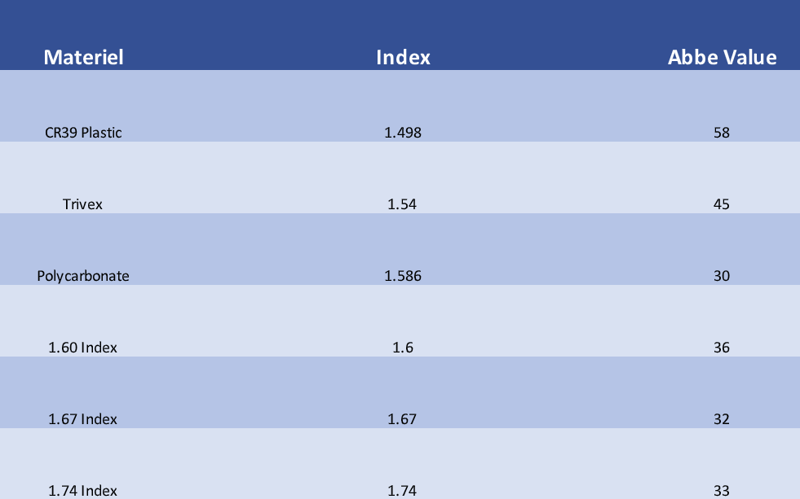Understanding How Abbe Value Can Affect Chromatic Aberration

The other day I had the pleasure of reading a very good article featured in 20/20 written by Palmer R. Cook, OD. He dug very deep into Chromatic Aberration and the effects it has on patients.
Part of my job here at IcareLabs is assisting our customers with trouble shooting problem patients. Often the issue is clarity or blur when not looking through the optical center. Lenses work great while looking straight ahead but with even minimal eye movement the clarity goes away. We always look at Rx, base curve, and lens design. This is the lowest hanging fruit.
 What is seldom taken into consideration is lens material and Abbe value. At one point Abbe value and chromatic aberration was a big thing. Improvements in polycarbonate and introduction of better high index monomers have made things somewhat better but chromatic aberration can still be an issue for some.
What is seldom taken into consideration is lens material and Abbe value. At one point Abbe value and chromatic aberration was a big thing. Improvements in polycarbonate and introduction of better high index monomers have made things somewhat better but chromatic aberration can still be an issue for some.
Abbe value of the lens material, Rx, where the patient is looking through the lens, and the distance from the object being viewed all play a part in creating chromatic aberration.
To correct vision the ophthalmic lens bends light by slowing it down. Each color (wavelength) of light will bend differently while passing through a lens material. There are three different color wavelengths: yellow-green, blue, and red. The standardization for our industry uses the yellow-green (587.56 nm) for measuring lens power. This keeps us all in agreement when measuring the power of the lens.
Here is the issue - when checking the power of a +5.00 we will get a +5.00 with our yellow-green calibrated equipment, but in the blue light spectrum it will read a little higher and in the red spectrum it will read a little lower. This power difference between red and blue light is know as “dioptric spread.”
To determine the dioptric spread of any lens material simply divide the power of the lens by the Abbe value of the material. Example - +6.00 lens in poly (Abbe of 30) will have a dioptric spread of 6 ÷ 30 or 0.2 diopters. The dioptric spread will range from +6.10 for blue light to +5.90 for red light.

You are probably wondering if this range of powers will cause your patients any problems. Usually not- as long as your patient is looking through the optical center of the lens. When looking through the OC the image difference is stacked directly in front of and behind one another.
When looking at the same object out of the optical center is where issues could occur. The stacked images are displaced by differing amounts, kind of like a deck of cards spread across a table. This will result in a rainbow of blur or chromatic aberration. The width of this rainbow (how far the deck of cards is spread) is related to the Abbe value and the prism powers for the various wavelengths as determined by Prentice's Law. The higher the Abbe value, the closer together the color fringes are. That is why a higher percentage of patients have issues with chromatic aberration in poly (Abbe of 30) than with CR39 (Abbe value of 58).
Does all of this really matter? The simple answer is yes, sometimes. Higher power prescription in lower Abbe lens materials will have a higher chance of issues with chromatic aberration. The catch here is that higher powers greatly benefit from higher index lenses with lower Abbe values.
Do not let the fear of chromatic aberration keep you from dispensing poly and high index lenses. We sell hundreds of poly jobs a day with almost no issues reported. Just keep in mind that when that rare patient comes in complaining of images not being clear in the distance or having a rainbow effect when looking outside of the OC, it could be chromatic aberration. The simple fix could be changing lens material to something with a higher Abbe value.
I hope that this has been a good reminder for you that you can add to your troubleshooting tool bag.
Looking for more dispensing tips? CLICK HERE
Our Optical Resource Center is always available for all ECPs with sales aids, layout charts, and more.

